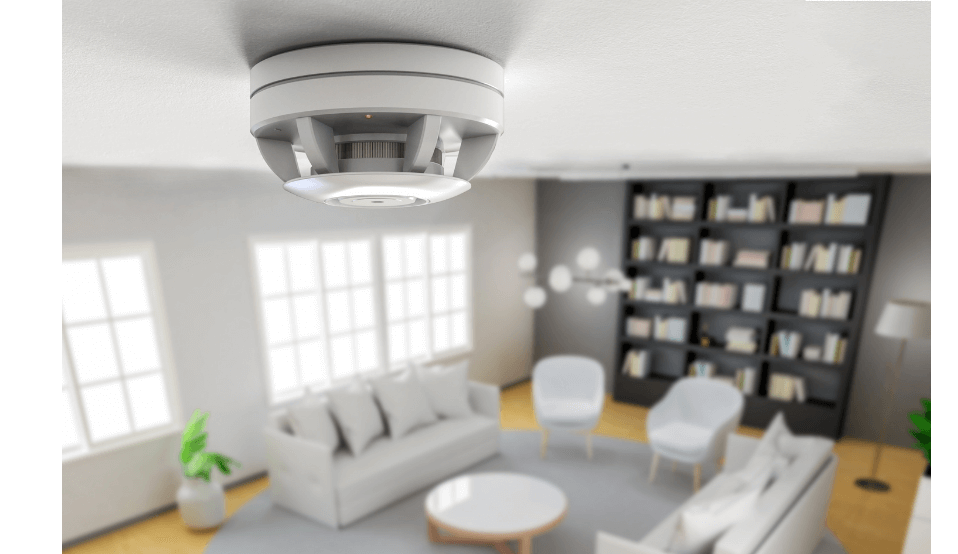Contents
In recent years, the convergence of various technologies has led to significant advancements in the fields of safety and security. Among these innovations, the integration of smoke detectors with cameras represents a notable development. This hybrid technology combines the life-saving capabilities of smoke detection with the surveillance benefits of cameras, providing a comprehensive solution for monitoring and responding to potential fire hazards and security breaches. This article delves into the details of smoke detector cameras, exploring their features, benefits, applications, and future prospects.
Understanding Smoke Detector Cameras
Smoke detector cameras are devices that incorporate both smoke detection sensors and surveillance cameras into a single unit. These devices are designed to provide real-time monitoring and alerting capabilities, ensuring that any signs of smoke or fire are detected early, while also capturing visual evidence of the surrounding environment. This dual functionality makes them invaluable in various settings, from residential homes to commercial buildings and industrial facilities.
Key Features
- Smoke Detection Technology:
- Ionization Smoke Detectors: These detectors use ionizing radiation to detect smoke particles. They are particularly effective at detecting fast-flaming fires.
- Photoelectric Smoke Detectors: These detectors use a light source and a sensor to detect smoke. They are more responsive to smoldering fires.
- Dual-Sensor Detectors: Combining both ionization and photoelectric technologies, these detectors provide comprehensive smoke detection capabilities.
- Camera Technology:
- High-Resolution Imaging: Modern smoke detector cameras are equipped with high-definition cameras capable of capturing clear and detailed images and videos.
- Wide-Angle Lenses: These lenses provide a broad field of view, ensuring extensive coverage of the monitored area.
- Night Vision: Infrared technology enables these cameras to capture clear footage even in low-light or no-light conditions.
- Motion Detection: This feature triggers the camera to start recording when movement is detected, conserving storage and enhancing security monitoring.
- Connectivity and Integration:
- Wireless Connectivity: Many smoke detector cameras support Wi-Fi or other wireless connections, allowing for easy installation and integration with existing security systems.
- Smartphone Integration: Users can receive real-time alerts and access live video feeds through mobile applications, enhancing convenience and responsiveness.
- Cloud Storage: Recorded footage can be stored in the cloud, providing secure and accessible storage solutions.
Benefits of Smoke Detector Cameras
- Enhanced Safety:
- Early Detection and Response: By detecting smoke early and providing visual confirmation, these devices enable quicker responses to potential fire hazards, reducing the risk of extensive damage and loss of life.
- Reduced False Alarms: Visual verification of smoke or fire helps reduce false alarms, ensuring that emergency services are called only when necessary.
- Improved Security:
- Continuous Monitoring: The presence of a camera in a smoke detector ensures continuous monitoring of the premises, deterring potential intruders and capturing evidence of any security breaches.
- Motion-Activated Recording: This feature ensures that only relevant footage is recorded, making it easier to review and analyze security incidents.
- Cost-Effectiveness:
- Dual Functionality: By combining smoke detection and surveillance into a single device, users can save on the cost of purchasing and installing separate systems.
- Reduced Maintenance: Fewer devices mean less maintenance and lower overall upkeep costs.
- Ease of Installation and Use:
- Wireless Options: Wireless smoke detector cameras can be installed with minimal disruption, making them suitable for both new constructions and retrofits.
- User-Friendly Interfaces: Mobile apps and web interfaces provide easy access to device settings, alerts, and video feeds.
Smoke Detectors with Camera price list
Applications of Smoke Detector Cameras
- Residential Settings:
- Homes and Apartments: Smoke detector cameras can enhance the safety and security of residential properties, providing peace of mind to homeowners and tenants.
- Vacation Rentals: These devices can help property owners monitor their rentals remotely, ensuring that any issues are promptly addressed.
- Commercial Buildings:
- Offices: Smoke detector cameras can protect office spaces from fire hazards and security threats, safeguarding employees and assets.
- Retail Stores: These devices can help deter shoplifting and vandalism while also providing early warning of fire outbreaks.
- Industrial Facilities:
- Factories and Warehouses: Smoke detector cameras can monitor large industrial spaces, where early detection of fires is crucial to preventing significant damage and downtime.
- Hazardous Areas: In environments with flammable materials, these devices provide an added layer of protection by combining smoke detection with visual monitoring.
- Public Spaces:
- Schools and Universities: Protecting students and staff from fire hazards and security threats is paramount, and smoke detector cameras can play a vital role in achieving this goal.
- Hospitals: Ensuring the safety of patients and healthcare workers is critical, and these devices can help maintain a secure and safe environment.
Challenges and Considerations
While smoke detector cameras offer numerous benefits, there are also challenges and considerations to keep in mind:
- Privacy Concerns:
- Surveillance: The presence of cameras in smoke detectors raises privacy concerns, particularly in sensitive areas such as bathrooms and bedrooms. It is essential to balance safety with privacy and adhere to legal and ethical standards.
- Data Security: Ensuring the security of recorded footage and preventing unauthorized access is crucial to maintaining user trust and privacy.
- Installation and Maintenance:
- Professional Installation: While many smoke detector cameras are designed for easy installation, professional installation may be required to ensure optimal performance and compliance with safety standards.
- Regular Maintenance: Regular testing and maintenance are necessary to ensure that both the smoke detection and camera components are functioning correctly.
- Cost:
- Initial Investment: The initial cost of purchasing and installing smoke detector cameras may be higher than traditional smoke detectors or standalone cameras.
- Subscription Fees: Some devices require subscription fees for cloud storage and advanced features, which can add to the overall cost.
Future Prospects
The integration of smoke detectors with cameras is still evolving, and future advancements are likely to enhance their capabilities further:
- Artificial Intelligence and Machine Learning:
- Enhanced Detection: AI and machine learning algorithms can improve the accuracy of smoke detection and reduce false alarms by analyzing patterns and distinguishing between smoke and other particles.
- Predictive Analytics: Advanced analytics can predict potential fire hazards based on historical data and environmental factors, enabling proactive measures to prevent fires.
- Integration with Smart Home Systems:
- Automation: Smoke detector cameras can be integrated with other smart home devices, such as smart locks, lights, and thermostats, to create automated responses to fire and security threats.
- Voice Control: Integration with voice assistants like Amazon Alexa and Google Assistant can provide users with convenient voice control over their smoke detector cameras.
- Improved Connectivity and Interoperability:
- 5G Technology: The adoption of 5G technology will enable faster and more reliable connectivity, enhancing the real-time capabilities of smoke detector cameras.
- Interoperability Standards: The development of industry standards for interoperability will ensure that smoke detector cameras can seamlessly integrate with various security and safety systems.
Conclusion
Smoke detector cameras represent a significant advancement in the fields of safety and security, offering a comprehensive solution for monitoring and responding to potential fire hazards and security threats. By combining the life-saving capabilities of smoke detection with the surveillance benefits of cameras, these devices provide enhanced protection for residential, commercial, industrial, and public spaces. While there are challenges and considerations to address, the future prospects for this technology are promising, with advancements in AI, smart home integration, and connectivity set to further enhance their capabilities. As technology continues to evolve, smoke detector cameras will play an increasingly vital role in safeguarding lives and property, providing peace of mind to users worldwide.











